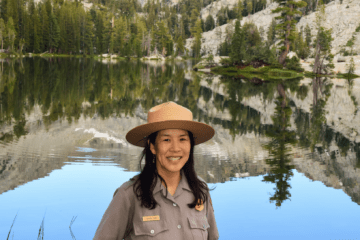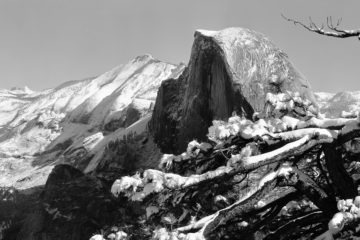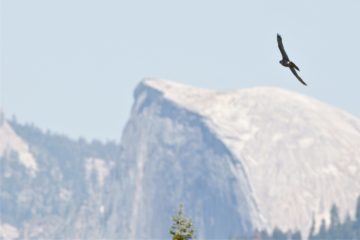Please note that this is a very unique, first-person account. It describes dangerous activities, which could not be replicated today. Snow Creek Cabin is deep in Yosemite Wilderness. Those wishing to visit require a Wilderness permit, proper planning, appropriate gear, and winter experience.
By Christopher Carr (& Family)
Yosemite is my favorite place on the planet, and I have spent over a year of my life in this glorious wonderland. Backpacking throughout the park in the high country is a spectacular experience.
The five members of the Carr family (Yan, Miriam, and three children) have visited Yosemite hundreds of times. Every year since 1942, we would camp in Tuolumne Meadows for several weeks to hike, scramble on the white granite, fish, view the wildlife, and appreciate all the beautiful wildflowers. Yosemite seems to run through our veins.
In the 1950s you could see hundreds of deer grazing in Tuolumne Meadows. Before Tioga Road from Lee Vining to Yosemite Valley was upgraded, it took more than eight hours to drive on the old one-lane road, honking your horn around the curves to alert other vehicles. Our favorite campsite was about eight miles up the Lyell Fork. Once, my sister Penny was getting a bucket of water from the river and, to our surprise, there was an 8-inch trout in the bucket.
Penny and I backpacked the entire John Muir Trail in 1958. She attended Stanford and joined the Mountain Club and was introduced to rock climbing. In the early 1960s, Penny taught me how to rock climb in Yosemite Valley and Tuolumne Meadows.
I worked for the California Cooperative Snow Surveys Program from 1964 through 1977. I became very familiar with the Snow Survey Program in Yosemite Park, both by Park Rangers in Yosemite and snow surveyors from the City and County of San Francisco, as part of the Hetch Hetchy project.
History of the Snow Creek Cabin
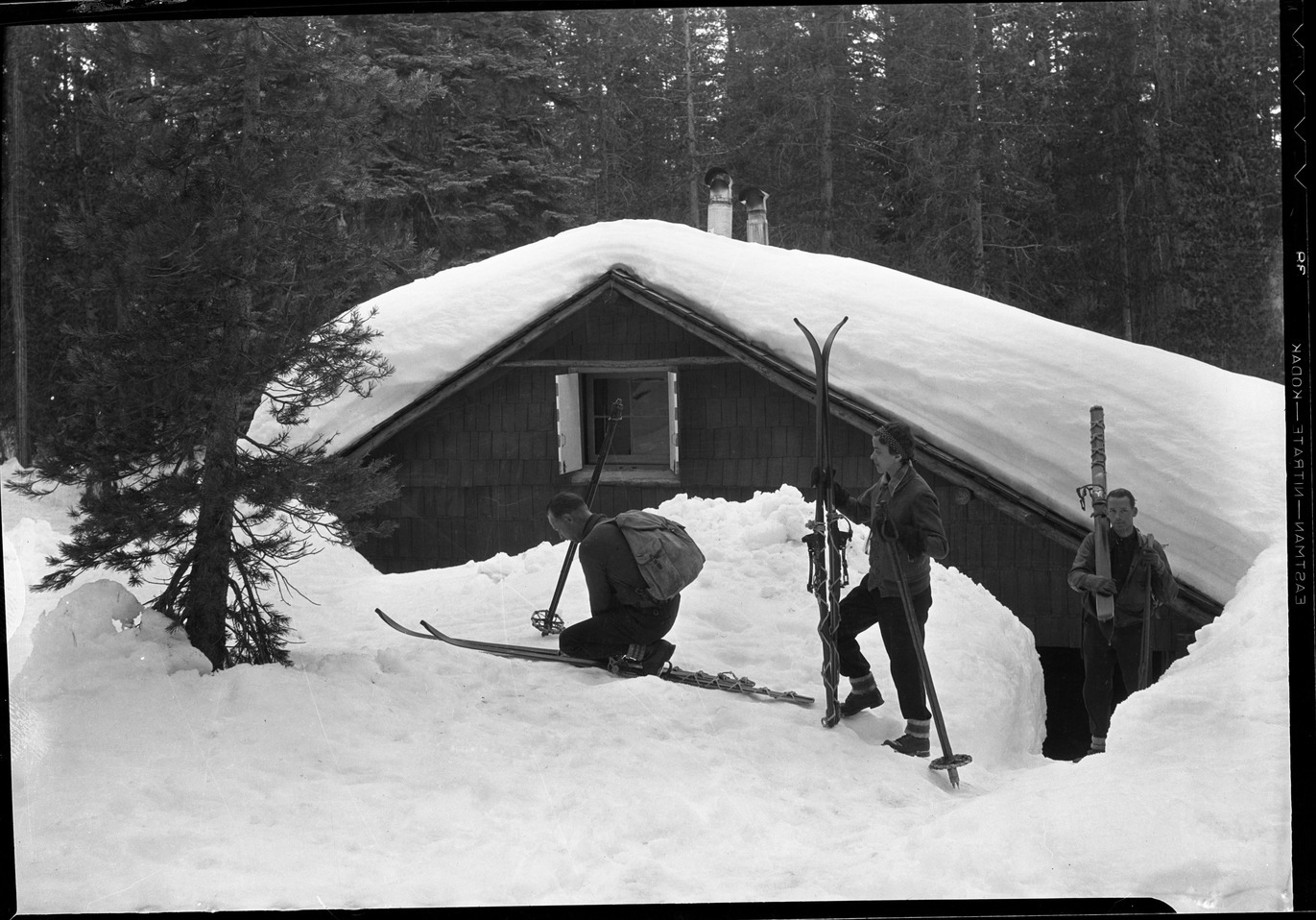
Skiers at Snow Creek Cabin, 1932. Image: NPS Archives
During the late winter of 1928-29 Donald Tresidder and Ernst Des-Baillets (who was in charge of winter sports for the Yosemite Park and Curry Company), made a ski trip from the Valley via Snow Creek to Tuolumne Meadows. Enthusiastic about the area, they wanted to study snow conditions on the north rim of Yosemite Valley near Mount Hoffmann, Snow Flat, and May Lake.
There was interest in developing a ski area in Yosemite, and to investigate ski conditions, there would need to be a scouting shelter. That shelter became the Snow Creek Cabin. The proposed ski area would be on the south facing slopes of Mount Hoffmann.
Plans for the cabin were drawn by Eldridge T. Spencer with assistance from Dr. Donald Tresidder, who wanted the cabin to be similar to Swiss mountain huts with the hope that in a few years the High Sierra Camps would also be a series of winter huts like those in the Alps.
The cabin was built in the fall of 1929. It had a kitchen with a wood-burning stove and a metal-lined hidey-hole to keep supplies safe from the bears and mice, and a larger room with six bunk beds. A narrow stairway led upstairs to two rooms with cots (later bunk beds). The cabin could accommodate 16 visitors. It was located at the edge of a wooded area, near a swampy meadow and a well was dug there.
After further investigation the proposed Mount Hoffmann Ski area turned out not to be feasible, and the development plans were abandoned. Focus then shifted to Badger Pass area, which later became Yosemite’s ski area.
The Snow Creek Cabin became part of several cabins for ski touring in the park. The cabin is located on the westerly slope of Mount Watkins at 7,650 feet. The trail winds up the Tenaya switchbacks (108), along the Snow Creek Trail, and turns toward Mount Watkins.
The first visitors came on January 8, 1930. Mary Curry Tresidder was among the first group, and she and many others including Ansel Adams made numerous trips to Snow Creek Cabin for five years. The first year saw 56 visitors to the cabin.
With the completion of the Badger Pass Ski Area, visitation to Snow Creek Cabin dwindled — in large part due to the avalanche hazards on the 108 Tenaya switchbacks. Trips to the cabin by visitors from the Valley were abandoned in 1934. The road to Glacier Point offered easier cross-county skiing without avalanche hazard. There was a ski hut at Ostrander Lake also used by snow surveyors.
In January 1930, Yosemite Park rangers began taking snow surveys at Tenaya Lake, Snow Flat, May Lake, Tuolumne Meadows, and Dana Meadows. The first stop was the Snow Creek Cabin (which was stocked with food, wood, and bedding). In the early days the snow surveyors had to follow blazes (trail markings) on the trees to find their way, which was difficult in deep snow. The surveyors then continued to Tenaya Lake Cabin and so on.
A few years later, license plates were put high up in the trees to safely mark the way to the cabins. With the improvement of the Tioga Pass Road in 1963, from Yosemite Valley to Tuolumne Meadows, Tucker Snow Cats were used to transport the snow surveyors to the cabins. The snow surveyors measured depth and water content at Gin Flat, Snow Flat, Tenaya Lake, Tuolumne Meadows, and Dana Meadows. The Snow Creek Cabin became an emergency snow survey shelter (still stocked with food, wood, and bedding).
Finding the Snow Creek Cabin
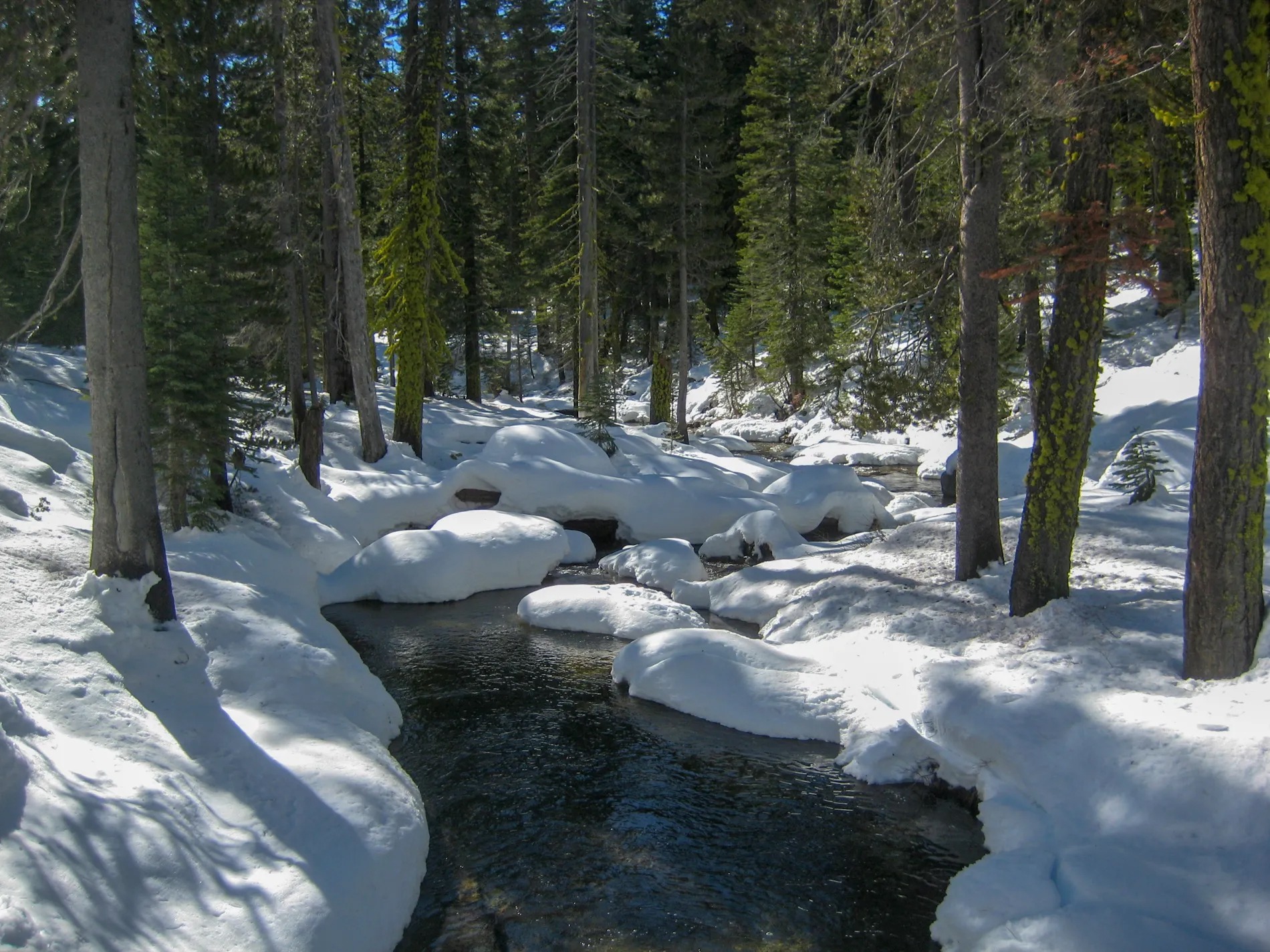
Snow Creek Trail in winter 2013. Photo: Klaus Komenda
My sister Penny (by then a well-known rock climber) and her friends Kay and Reva Johnson, and Meredith Ellis were researching the history of the Curry Company in 1964. They found pictures of the Snow Creek Cabin near Mount Watkins and wondered if the cabin still existed. They inquired among their friends and park rangers: no one knew anything about the cabin. There were rumors that the cabin had burned down many years prior. The women were inspired to try and locate it. They began their search on several occasions, hiking up the Snow Creek Trail without finding the cabin.
At that time, I worked for the California Cooperative Snow Survey program, and shared the tale of the lost cabin with a friend who worked as a snow surveyor, who told us that there may well be license plate trails to many of the snow survey cabins. During the summer of 1964 Penny’s friend Reva hiked up the Snow Creek Trail and did find license plates high in the trees, leading to a large meadow. With persistence she found the cabin surrounded by many tall and overgrown trees. The door was locked and she did not enter.
Reva told Penny and Meredith to follow the license plate trail and they also found the cabin, only they were able to enter the cabin, because the door hinges were rusted and easily broke open. The two floors of the cabin were covered in mice droppings, and they affectionately renamed the cabin “Turd Hall.”
After much difficulty they were able to gain access to the food pantry area and found snow survey rations (some still edible), canned food, lots of ironed sheets for the beds, blankets, pillows, and towels. They also found a number of Mary Curry Tresidder’s personal belongings. Outside they discovered the well, and also an inside toilet in the back part of the woodshed — both of which needed cleaning. They also found a logbook, and they inscribed their adventures in cleaning up the cabin.
Near the cabin there is a large granite outcropping (dome) with a huge ponderosa pine. The sloping hill was nicknamed Herringbone Hill — a good ski practice slope. The dome is a wonderful viewing point to see the moon rise over Clouds Rest and Half Dome.
During the Christmas holidays in 1964, Penny, Reva, Gary, and seven of her close climbing friends spent the Christmas holidays in the cabin. A few days later a very big snowstorm arrived and it snowed so much they were stranded in the cabin for several days. To keep herself occupied, Penny made her own snowshoes out of willow and string.
After several days, they were able to make their way back to the Valley. However, on the Tenaya switchbacks, an avalanche buried one of the party up to his chest in snow, and it took some time to dig him out. They arrived in the Valley late at night. In late 1964 only a few close climbing friends knew about the cabin and they kept its location a secret. Penny unfortunately passed away in May 1966.
Fixing the Cabin
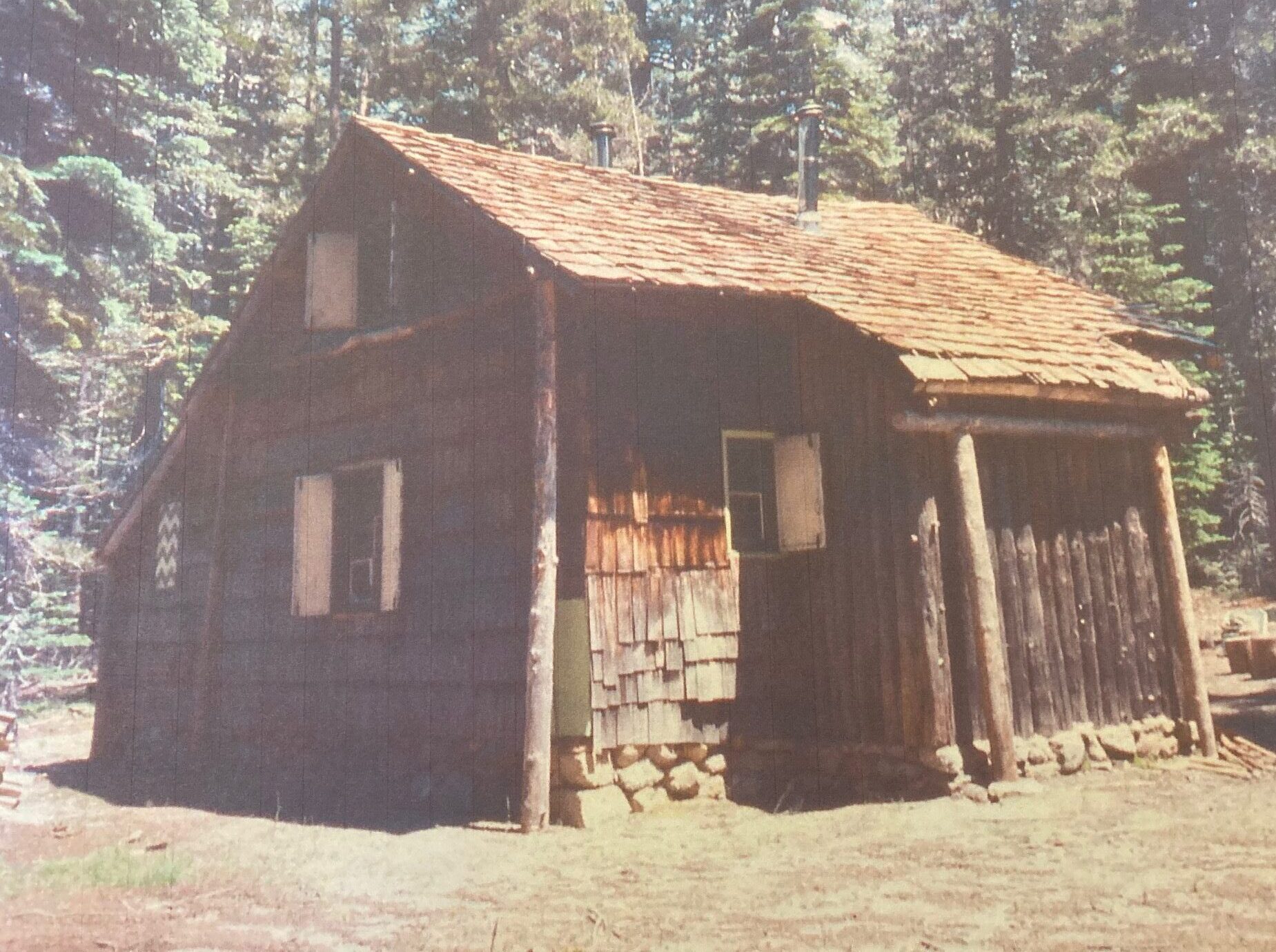
Restored roof shingle on the Snow Creek Cabin 1968. Image: Christopher Carr
Gary and I had been college friends and were also climbing buddies and made many rock climbing ascents in Yosemite Valley in 1963. After Penny’s untimely passing, Gary told me that the cabin needed some repairs. During the summer of 1967, I backpacked to the cabin down the trail from the rock quarry on Highway 120, below Tenaya Lake. The roof was in poor condition and would probably not survive much longer. I took notes to repair the roof, windows, and ladders. I also observed that bears had been trying to get into the food pantry from outside. There were numerous new visitors who signed the logbook, since Christmas 1964.
Plans were made and supplies purchased for the repairs. My brother, his girlfriend, and I drove to the quarry in the summer of 1968. We loaded our packs with shingles, roofing felt, nails, and tools. We covered our packs with canvas to disguise our loads. We backpacked all those supplies to the cabin during several trips.
The three of us removed the worn-out shingles (saved the old shingles for kindling), installed felt and new shingles on both sides of the roof. We repaired loose windows, shored up the outside of the food pantry, and built two new log ladders. We recorded our accomplishments in the logbook. The following winter of 1969 recorded the highest snowfall of any year prior. I don’t believe the cabin would have survived that winter without a new roof,
The remainder of the 1960s and early 1970s saw many rock climbers, backpackers, and other visitors. Word of mouth about the cabin spread quickly. Most visitors took good care of the cabin, made some minor repairs, re-stocked the wood supply, and signed the logbook. The cabin unfortunately attracted a few visitors who did not respect the cabin and its contents.
Protecting the Cabin
During the fall of 1976, I was still working in the snow survey program. The cabin was now 48 years old. I had invested my time and effort in protecting the cabin in 1968 and wanted to find a way to protect it again. In another two years, the cabin would be 50 years old and would qualify as a historic site.
I talked with the snow survey staff in Yosemite National Park and asked permission to install some weather instrumentation at the cabin and have two park volunteers stay there during the winters of 1978 and 1979. Permission was granted, and I arranged for two park volunteers to stay in the cabin during the winter, taking and recording daily measurements. By the end of 1979 the cabin was 50 years old and became a historical site, along with others in the park.
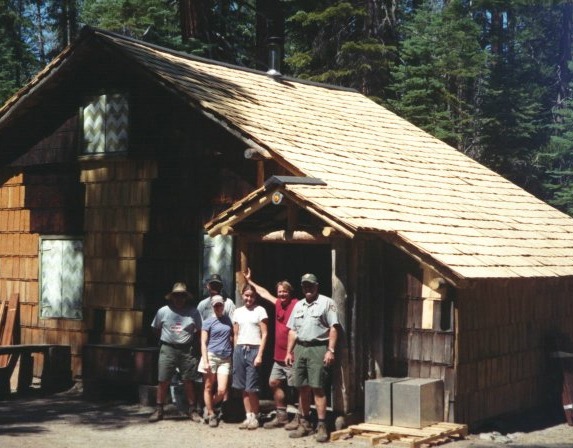
2006 repairs on Snow Creek Cabin. Project Manager, Rod Kennec (far right), with other Park staff and interns at Snow Creek Cabin
I re-visited the historic cabin in 1986 and 1988, and noticed that the entry door had a National Park Service padlock. The remodeled roof was still in good condition. But by 2000, the cabin was closed again because of poor condition and safety concerns. In 2006, with the help of Yosemite Conservancy and others the cabin was completely restored. It no longer contains kitchen supplies or bedding, only wood for heat and accommodations for six visitors during the winter months.
The remaining members of our family are appreciative of the many efforts to save Snow Creek Cabin and are very grateful that the historical value of the cabin is preserved, and the physical structure is sound. On July 18, 2014, the Snow Creek Cabin was listed in the National Register of Historic Places. It will celebrate its centennial in 2029.
I have designated part of my family trust to support Yosemite Conservancy and their many restorative projects in the park. I now reside with my wife Janet in Fair Play, Calif. in the Sierra Foothills. We still visit Yosemite each year to re-connect to the special place Yosemite holds in our hearts.
Visiting Snow Creek Cabin
Visitors can ski or snowshoe to the cabin during the winter months when there is enough snow. The cabin is closed the rest of the year. Although access is limited to a few, an experience of a lifetime is available to those who choose to visit and stay in the cabin during the winter months. This allows visitors to the area to experience the beauty and silence of winter in a wilderness setting. Much like Ostrander Ski Hut, it is not a journey to be taken lightly: visitors must be prepared for a 7 mile hike with 4,000 feet of elevation gain, with most of the trail under snow.
To visit the cabin you will need a wilderness permit from the Valley Visitor Center, which can be picked up a day before travel to the cabin and cannot be reserved in advance. Check with the park on what to bring with you, as requirements may change. Contact the Park at (209) 372-0200.
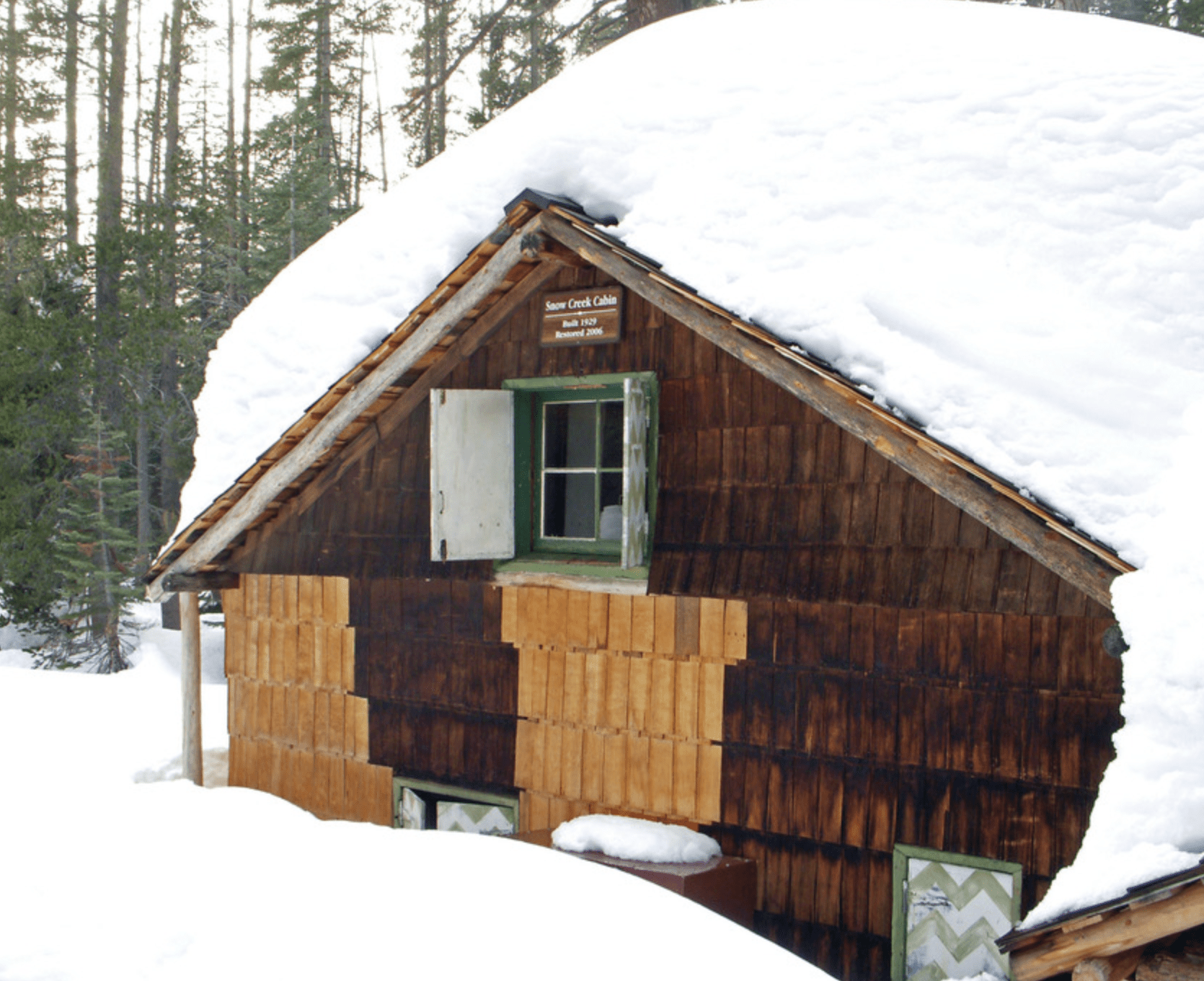
Snow Creek Cabin in winter 2010. Image: pickelltree at hikearizona.com

